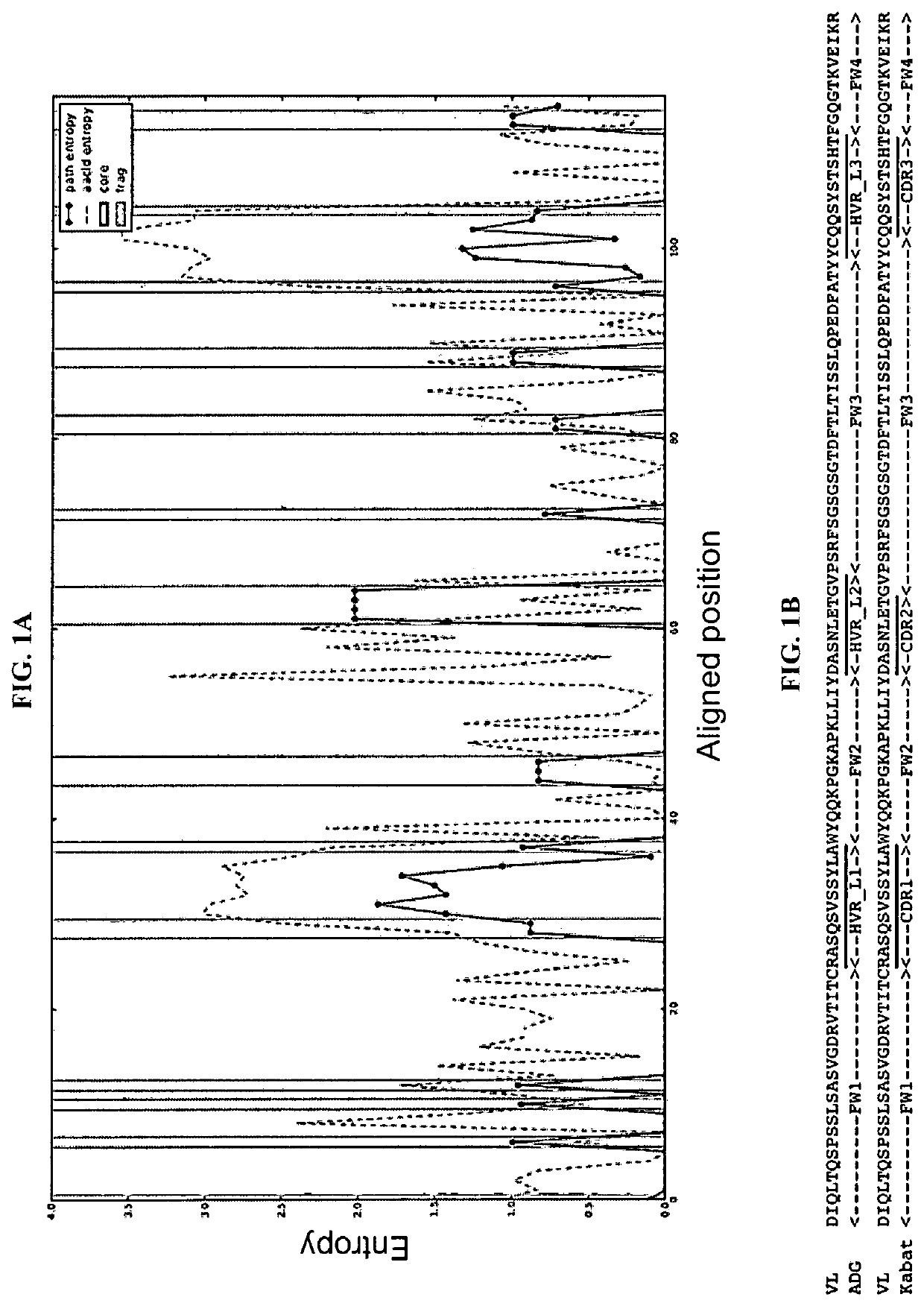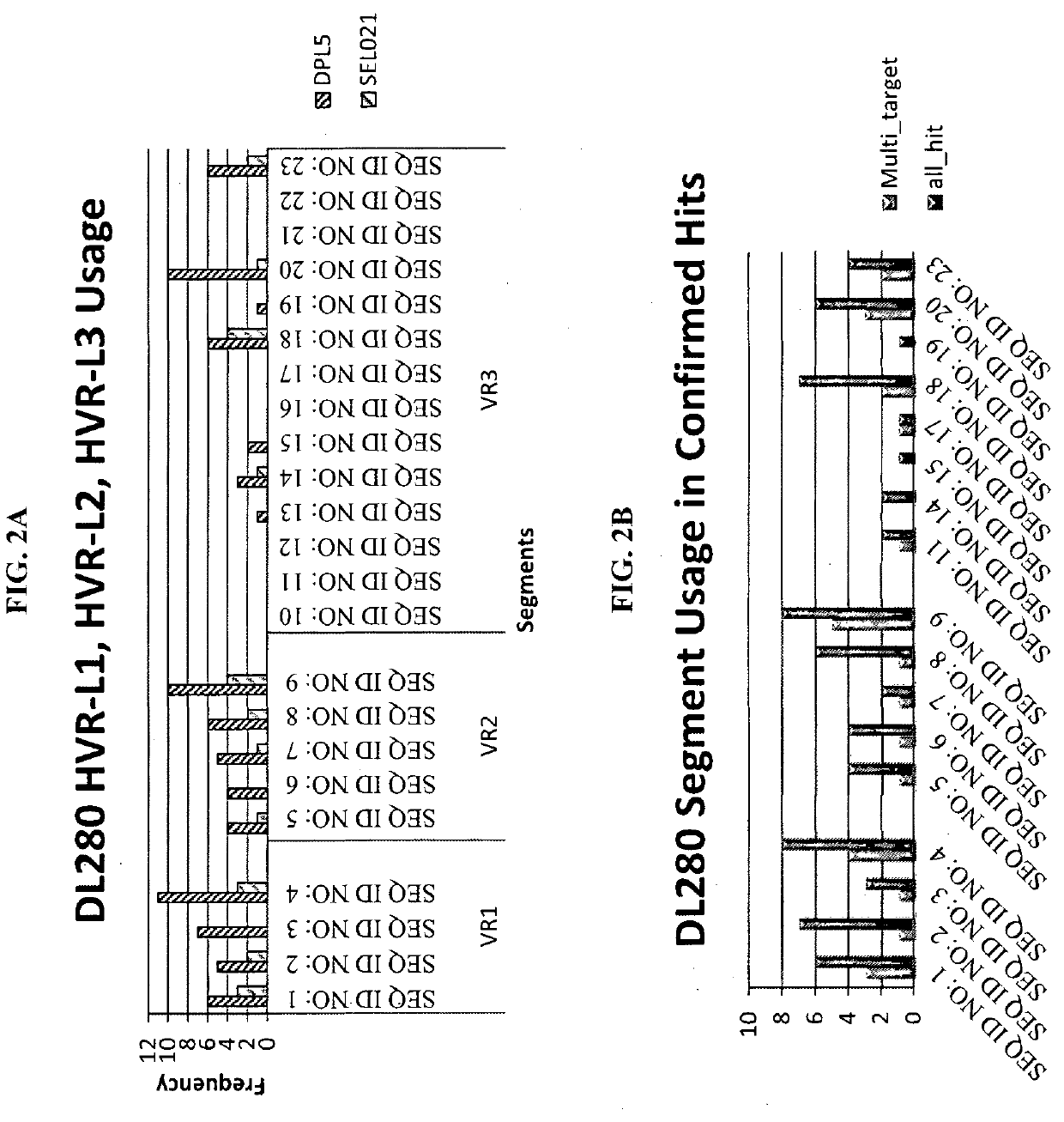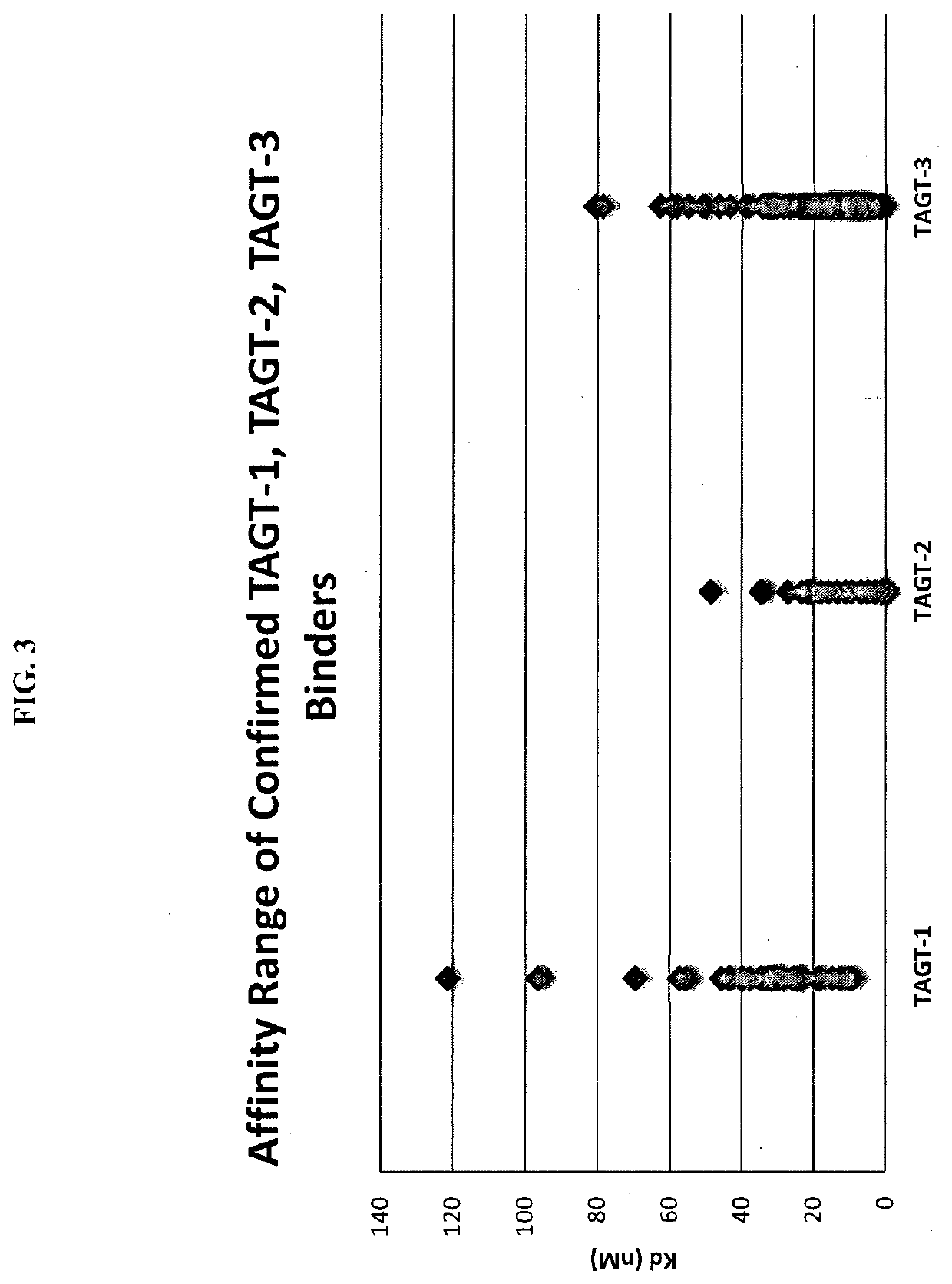Dynamic human antibody light chain libraries
- Summary
- Abstract
- Description
- Claims
- Application Information
AI Technical Summary
Benefits of technology
Problems solved by technology
Method used
Image
Examples
example 1
ation of the Minimal Set of Dynamic Motifs on Hypervariable Regions
[0107]To understand variability of antibody variable domains at a structural level, an algorithm was developed to map the geometric alignment for antibody variable domains, and further, to calculate the structural and sequence entropy based upon the geometric alignment. Taking such an approach combines the classical theory of antibody diversity being determined by the well-established process of V(D)J recombination coupled with conformational diversity from dynamic units (template-directed conformational selection by Linus Pauling; See e.g., James, L. and Tawfik, D. “Conformational diversity and protein evolution—a 60-year-old hypothesis revisited”, Trends Biochem Sci. 2003 July; 28(7):361-8) to allow sampling of an almost infinite epitope space by selection and adaptation of antibody binding sites. As an example, this algorithm was used to analyze the structural and sequence variability of 81 high-resolution crystal...
example 2
ion of Common Light Chain Libraries
Construction of the Light Chain Library DL280
[0109]To begin construction of the DL280 light chain library, 20 mini-genes were synthesized that encoded 20 combinations of HVR-L1 and HVR-L2 sequences (Table 1). The synthesized mini-genes were then digested with PvuI and BamHI, and ligated into the target vector Fad22 that was digested with the same two restriction enzymes. The ligation mixtures were transformed into DH10B cells, the 20 constructs were purified, and the sequences were verified for the next stage of construction.
[0110]A total of 14 oligo pairs that encoded 14 HVR-L3 sequences (Table 1) were designed and synthesized. Oligo annealing was performed in a PCR machine with the following settings: 95° C. for 3 minutes, and then 35 cycles (15 seconds for each cycle) beginning at 95° C., decreasing temperature by 1° C. every cycle. After annealing, each pair was digested individually with PstI and Acc65I, and ligated individually into the above...
example 3
the Common Light Chain Library to Isolate Antibodies of Interest
Preparation of Common Light Chain Library Phagemid Particles
[0117]To prepare common light chain library phagemid particles for antigen panning, 1.6 liters of ER2738 cells harboring the common light chain library (described in Example 2 above) were inoculated in media containing 2×YT, 2% glucose, 100 μg / mL ampicillin and 12.5 μg / mL tetracycline at a starting OD600 of 0.1. The culture was grown at 37° C., shaking at 250 rpm, until it reached OD600 of 0.6-0.8. The cells were then infected with M13K07 helper phages at a multiplicity of infection (MOT) of 10 for 30 minutes at 37° C. The infected ER2738 cells were grown overnight at 22° C. in 3.2 liters of media containing 2×YT, 100 μg / mL ampicillin and 50 μg / mL kanamycin. Culture supernatants were then harvested by centrifugation at 10,000 rpm for 15 minutes, and filtered through a 0.45 μm low-binding membrane filter (Corning). The phagemid particles were then precipitated f...
PUM
| Property | Measurement | Unit |
|---|---|---|
| Temperature | aaaaa | aaaaa |
| Temperature | aaaaa | aaaaa |
| Temperature | aaaaa | aaaaa |
Abstract
Description
Claims
Application Information
 Login to View More
Login to View More - R&D
- Intellectual Property
- Life Sciences
- Materials
- Tech Scout
- Unparalleled Data Quality
- Higher Quality Content
- 60% Fewer Hallucinations
Browse by: Latest US Patents, China's latest patents, Technical Efficacy Thesaurus, Application Domain, Technology Topic, Popular Technical Reports.
© 2025 PatSnap. All rights reserved.Legal|Privacy policy|Modern Slavery Act Transparency Statement|Sitemap|About US| Contact US: help@patsnap.com



